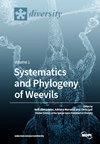中国特有金茶花的基因型和表型多样性
IF 2.1
3区 生物学
Q2 BIODIVERSITY CONSERVATION
引用次数: 0
摘要
金茶花属植物不仅是优质茶花种质的典范,而且是具有丰富药用和营养价值的植物群,在中国这些植物被用作食品、化妆品和传统药物。全世界约有50种金茶花属植物,在中国已被列入名录的有30多种。这些物种的叶子和花有相似的形状,因此,它们经常被误认为是同一物种。本研究采用简化基因组测序技术构建了中国金茶花属植物的系统发育树,并描述了其进化关系。同时测定叶片中总酚、总黄酮、总花青素和鞣花酸的次生代谢指标,并进行主成分聚类分析。结果表明,充分揭示了中国金茶花属植物种间的系统发育关系和遗传距离。化学次生代谢树和遗传系统发育树的聚类分析显示出一些相同的趋势,从而表明次生代谢可以作为金茶树的生物标志物。研究结果为中国区域分布的金茶花的基因型和性能多样性提供了系统发育信息,并为潜在生物活性物质的研究和开发提供了理论依据。本文章由计算机程序翻译,如有差异,请以英文原文为准。
Genotypic and Phenotypic Diversity of Endemic Golden Camellias Collected from China
Not only are the plants of the golden camellia group examples of high-quality camellia germplasm, but they are also a plant group with rich medicinal and nutritional value, and these plants are used as food, cosmetics and traditional medicine in China. There are approximately 50 species in this group around the world, and more than 30 species of golden camellia plants have been listed in China. The leaves and flowers of these species have similar shapes, and as such, they are often confused as the same species. Our study used simplified genome sequencing technology to construct a phylogenetic tree of plants in the Chinese golden camellia group, and we also described the evolutionary relationships. At the same time, the secondary metabolic indexes of the total phenols, total flavonoids, total anthocyanins and ellagic acid in the leaves were determined, and principal component clustering analysis was also performed. The results showed that the phylogenetic relationship and genetic distance among the plant species of Chinese golden camellia group plants were fully revealed. The cluster analysis of chemical secondary metabolism and genetic phylogenetic trees showed some of the same trends, thereby indicating that secondary metabolism golden camellia can be used as biomarkers for golden camellia. The research results provide phylogenetic information for the genotype and performance diversity of the golden camellia that is regionally distributed in China, as well as provide a theoretical basis for the research and development of potential bioactive substances.
求助全文
通过发布文献求助,成功后即可免费获取论文全文。
去求助
来源期刊

Diversity-Basel
Environmental Science-Ecological Modeling
CiteScore
3.40
自引率
12.50%
发文量
925
审稿时长
11 weeks
期刊介绍:
Diversity (ISSN 1424-2818) is an international and interdisciplinary journal of science concerning diversity concept and application, diversity assessment and diversity preservation. It is focused on organismic and molecular diversity. It publishes reviews, regular research papers and short notes in the regular issues. Related news and announcements are also published. Our aim is to encourage scientists to publish their experimental and theoretical results in as much detail as possible. Therefore, there is no restriction on the length of the papers. Full experimental details must be provided so that the results can be reproduced.
 求助内容:
求助内容: 应助结果提醒方式:
应助结果提醒方式:


